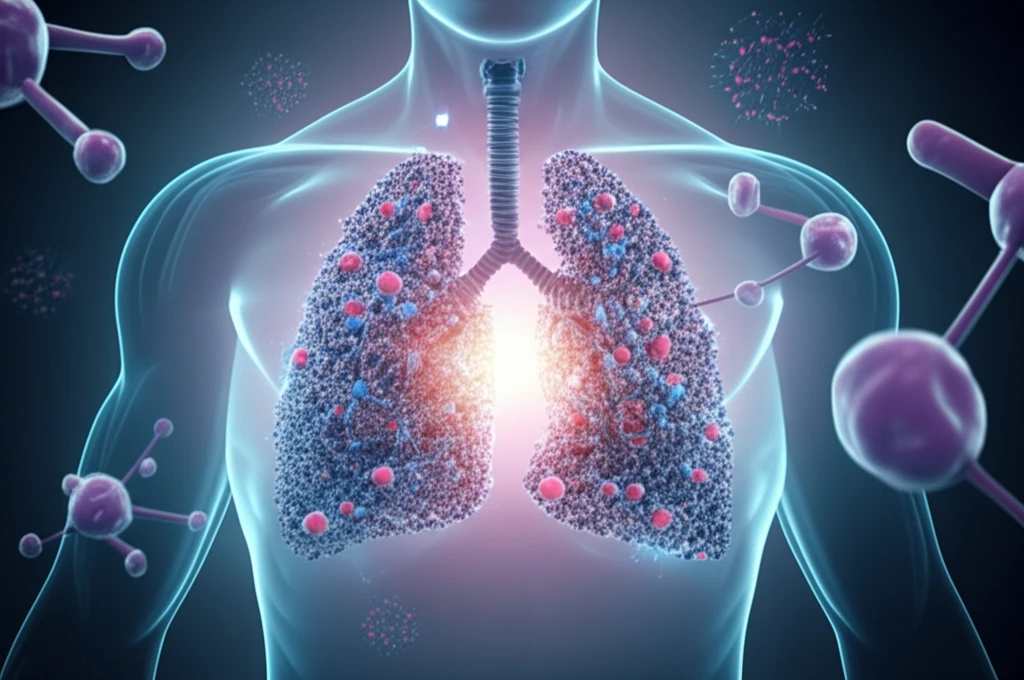
Early Lung Cancer Detection: A New Hope with Glucose Transporters
"Harnessing glucose transporters for earlier, more effective lung cancer diagnosis and treatment."
Lung cancer remains a leading cause of cancer-related deaths worldwide. The insidious nature of this disease often allows it to progress silently until it reaches advanced stages, where treatment options are limited and the prognosis is poor. Early detection is critical, as it significantly improves the chances of successful treatment and long-term survival. However, current screening methods have limitations, underscoring the urgent need for innovative approaches to identify lung cancer at its earliest, most treatable stages.
Traditional methods, such as chest X-rays and CT scans, have been instrumental in detecting lung abnormalities. However, these methods often lack the sensitivity to detect small, early-stage tumors. Furthermore, they can result in false positives, leading to unnecessary anxiety and invasive procedures. The quest for more accurate and less invasive early detection methods has driven researchers to explore molecular markers and targeted imaging techniques.
Recent research featured in Science Translational Medicine sheds light on a promising new avenue for early lung cancer detection: targeting a specific glucose transporter called sodium-dependent glucose transporter 2 (SGLT2). This groundbreaking study, led by Scafoglio et al., reveals that SGLT2 is specifically found in early-stage lung tumors, making it a potential biomarker for early diagnosis and a target for novel therapeutic interventions. This discovery could revolutionize how lung cancer is detected and treated, offering new hope for improved outcomes.
Why Targeting Glucose Transporters Could Change the Game

The study by Scafoglio et al. introduces a novel approach to early lung cancer detection by focusing on the sodium-dependent glucose transporter 2 (SGLT2). Glucose transporters play a crucial role in cancer cells, which require a high amount of glucose to fuel their rapid growth and proliferation. Among the different types of glucose transporters, SGLT2 stood out as particularly promising because it is specifically found in early-stage lung tumors. This specificity makes SGLT2 an ideal target for early detection and therapeutic interventions.
- Specificity: SGLT2 is specifically found in early-stage lung tumors, reducing the risk of false positives.
- Non-invasive: PET imaging is a non-invasive technique, minimizing patient discomfort and risk.
- Early Detection: The tracer allows for the detection of tumors at their earliest, most treatable stages.
A Promising Future for Lung Cancer Treatment
The discovery that sodium-dependent glucose transporter 2 (SGLT2) is specifically found in early-stage lung tumors opens up exciting new possibilities for early detection and targeted therapy. The ability to use a radiolabeled tracer for PET imaging and to repurpose existing diabetes drugs like gliflozins offers a rapid and effective way to improve lung cancer treatment outcomes. As research continues, this innovative approach promises to change the landscape of lung cancer care, providing new hope for those at risk of or diagnosed with this deadly disease.
